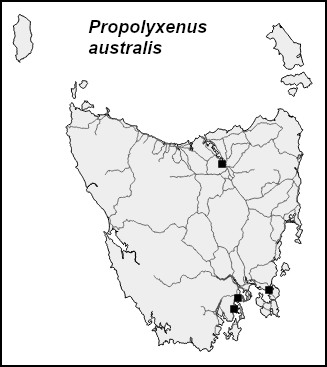Polyxenida
The tiny polyxenidans, or "bristle millipedes", have tufts of bristles on their sides, and rows or clumps of bristles on the back of each segment. Some species have two long brushes of bristles at the rear end. Adults reach 3-4 mm in length.
Polyxenida are rarely recorded but probably common in Tasmania; they can be mistaken for insect larvae. They seem to be most abundant in dry forest and heathland at low elevations in eastern and northern Tasmania, but specimens have also been found in rainforest in the northeast and northwest. Polyxenida species are typically found in small, multi-aged groups in relatively dry shelters, such as cavities under loose bark on standing trees.
No polyxenidan species is endemic to Tasmania, and Propolyxenus forsteri also occurs in New Zealand.
The following key is based on one provided by polyxenidan specialist Megan Short, who also supplied most of the images.
1a. Scales present on dorsal surface, rear of body conical, bristles at rear not in bundle, 17 pairs of legs in adult
..........go to 2
1b. Hair-like bristles on dorsal surface arranged in rows or rosettes, rear not conical in shape, 13 pairs of legs in adult
..........go to 3
2a. Dorsal scales T-shaped (below, left)
..........Phryssonotus novaehollandiae (Silvestri, 1923)
2a. Dorsal scales trapezoid-shaped (below, right)
..........Phryssonotus australis Huynh and Veenstra, 2018
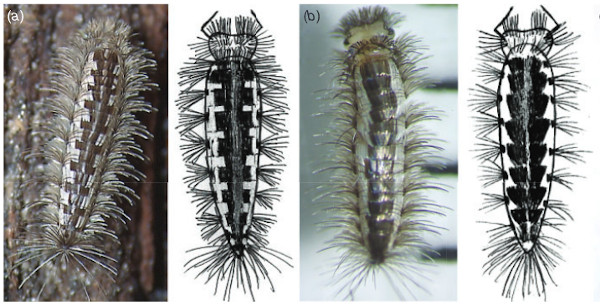
Phryssonotus novaehollandiae (left) and P. australis (right), from Huynh and Veenstra (2018).
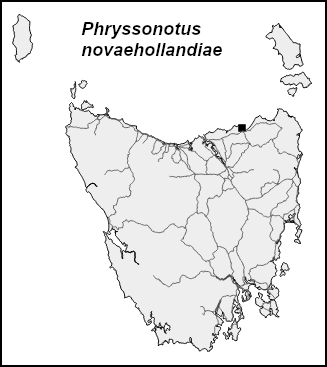
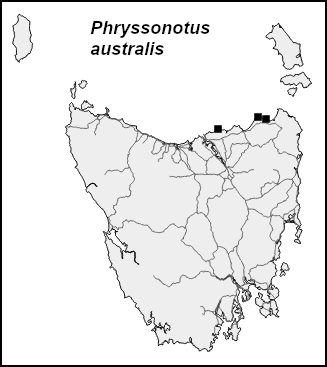
3a. Bristles at rear arranged in a single bundle
..........Unixenus corticolus Short and Huynh, 2011
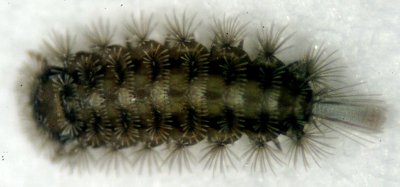
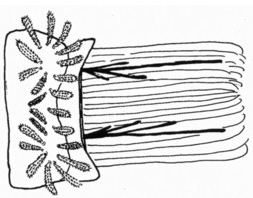
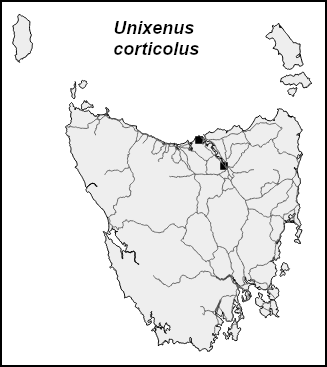
3b. Bristles at rear arranged in two bundles with extra bristles arranged above in a fan shape
..........go to 4
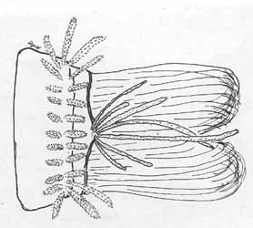
4a. Two distinct rows of short bristles on each segment, a pair of bristles in midline of the vertex of the head
..........Polyxenus lagurus (Linnaeus, 1758)

Not yet recorded in Tasmania, but possibly introduced into cities or towns. Probably European in origin, now widespread; occurs in Melbourne.
4b. More than two rows of bristles on each dorsal segment, bristles may be arranged in rosettes with rows less obvious
..........go to 5
5a. Adult (13 pairs of legs) more than 3 mm long, 6 ocelli in adult, dorsal bristles long and arranged in pairs of rosettes; tail brushes white
..........Propolyxenus forsteri Condé, 1951
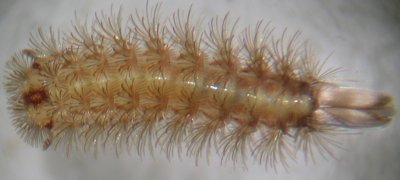
5b. Adult (13 pairs of legs) less than 2 mm long, 5 ocelli in adult, dorsal bristles short and arranged in 3 distinct rows across each segment; tail brushes dark
..........Propolyxenus australis Short and Huynh, 2010


